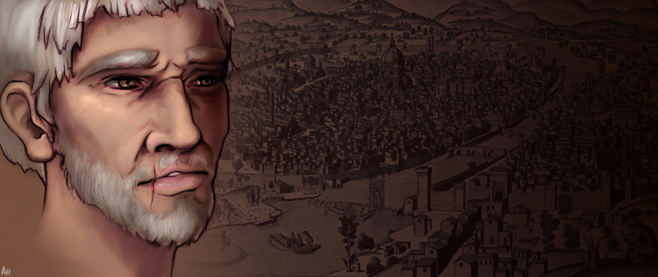
Assassin’s Creed: Syndicate and Life in Motion
Mathematician Blaise Pascal put it well when he said, “Our nature consists in motion; complete rest is death.” We use movement to distinguish the living from the dead, and we judge the liveliness of a town on the activity of its denizens. The horror genre relies on deathly silence to evoke a sense of the unnatural, and our very bodies rely on the constant flow of blood to keep functioning.
Not only is motion vital to life, it’s crucial to any medium attempting to emulate life. Movies are literally moving pictures, static images cycled through fast enough to fool our brains. Video games go even further, making motion the primary means of interaction. Movement in the real world translates to movement on-screen, inviting immersion in the illusion of a living world.
It is motion that so enthralled the first players of Spacewar and Pong. It is motion that drove the success of the side-scrolling platformer, the arcade racer, the 3D shooter. Speed, in particular, was important enough to form the basis of an entire character, and eventually a whole genre.
Modern games place an even greater emphasis on motion. Motion capture, motion controls, virtual reality; the more naturally a game moves, the easier it is to get sucked into its world. Even the gentle sway and fidgeting of an idle character enhances the sense that a world exists independent of the player.
Consider Assassin’s Creed: Syndicate, the latest entry in the time-hopping AC franchise. Horse-drawn carriages clatter down the cobblestone streets of Victorian-era London, carrying sight-seers, smuggling cargo or starting fights between rival gangs that culminate in wild chase scenes on par with Hollywood’s finest. Players soar between rooftops using a Batman-inspired grappling hook, watching a bustling world unfold below them. And when it comes time to return to ground level, the streamlined parkour system introduced in AC: Unity preserves momentum. Movement has an organic flow that makes the player feel like a natural part of the world, rather than an artificial intruder.
Beneath this motion lies purpose. When we witness an effect, we look for its cause, ascribing reason to everything from why the sun rises to why we yawn. It doesn’t matter whether a deliberate motive actually exists; we crave any story that explains what we see.
AC: Syndicate leverages this story-telling tendencies to make its world seem bigger than it really is. Boats and barges chug down the river Thames, loaded with cargo purportedly destined for distant shores. Passenger ferries carry wealthy patrons between their places of business. Crowded train stations rumble with the sounds of tearful departures and joyous family reunions. A hundred different tales play out through the vehicle of public transport.
Motion is life. It is the difference between a traditional museum and an open-air historical park: both convey the same information, but only one truly captures the essence of another time.
In AC: Syndicate, London moves, and so it lives.




